Dealing With Pool Algae: Prevention And Remedies
Owning a pool is one of the greatest luxuries, especially when the sun is shining and you've got a refreshing oasis right in your backyard. But nothing spoils this paradise faster than the unwelcome arrival of pool algae. These pesky invaders can turn your crystalline waters into a murky, uninviting mess. In this blog post, we'll delve into the world of pool algae, explore the types commonly found in pools, and discuss effective prevention and treatment strategies. Our aim is to equip you with all the knowledge you need to keep your pool algae-free and always ready for a swim.
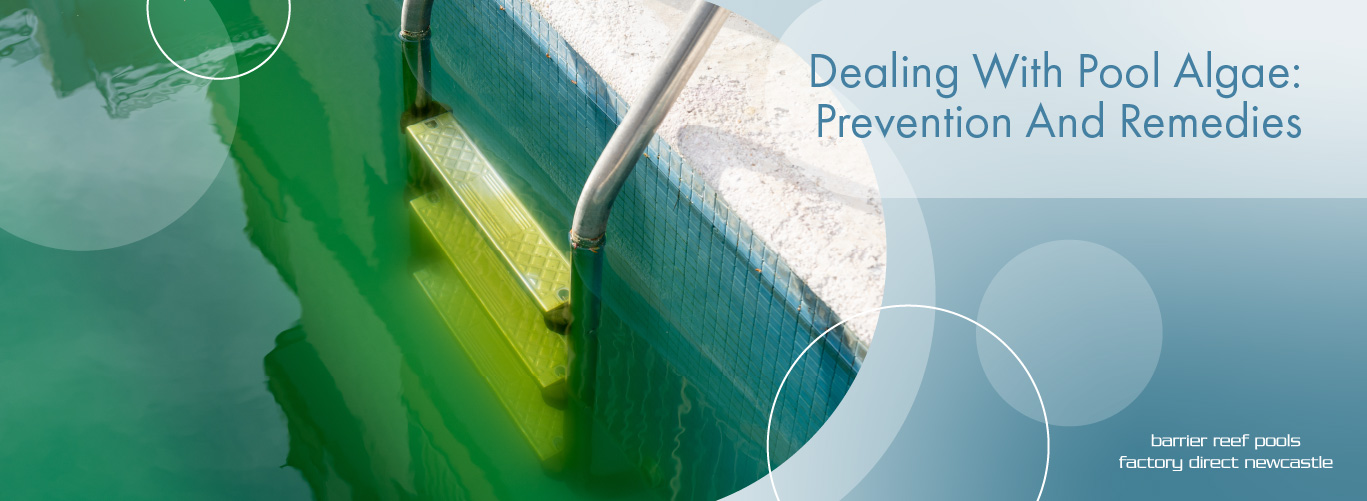
Types of Algae Common in Pools
Understanding the enemy is the first step in any battle, so let’s get familiar with the three most common types of algae that can infest your pool.
Green Algae
Green algae are the most frequent offenders in swimming pools, thriving particularly in warm, sunny conditions. They can spread rapidly, turning your water a sickly green hue within days if not managed properly. Not only do they make your pool look unpleasant and uninviting, but they also create a slippery surface that can be hazardous for swimmers. Regular cleaning and proper water balance are crucial in preventing their growth.
Yellow Algae
Yellow algae, also known as mustard algae, are less common but considerably more stubborn. They typically cling to walls, steps, and other surfaces, often requiring more aggressive treatment to remove. Their yellowish-brown appearance can be mistaken for pollen or sand, but they are much more tenacious and resistant to standard pool chemicals. Persistent and tough to eliminate, they often necessitate specialised algaecides and thorough scrubbing.
Black Algae
Black algae are the toughest to eradicate among all types. They form dark, spotty clusters that penetrate deep into porous surfaces like concrete and plaster. Their robust roots anchor them firmly, making them resistant to standard chemical treatments and regular brushing. Eradicating black algae often requires a combination of aggressive chemical treatments, such as high doses of algaecides, and persistent manual scrubbing to ensure the roots are completely removed. Consistent monitoring and maintenance are essential to prevent their recurrence.
Factors Contributing to Algae Growth
So, what causes these tiny invaders to infiltrate your watery haven? Several factors can contribute to algae growth in your pool.
Inadequate Filtration and Circulation
If your pool’s filtration system isn’t working efficiently, or if water circulation is poor, algae can find the perfect environment to thrive.
Imbalanced Water Chemistry
Keeping your pool’s water chemistry balanced is crucial. Low chlorine levels, high pH, and imbalanced alkalinity can create a breeding ground for algae.
Environmental Factors
Leaves, debris, and organic matter introduce nutrients that algae feed on. Warm temperatures and sunlight also accelerate algae growth, making it essential to cover your pool when not in use.
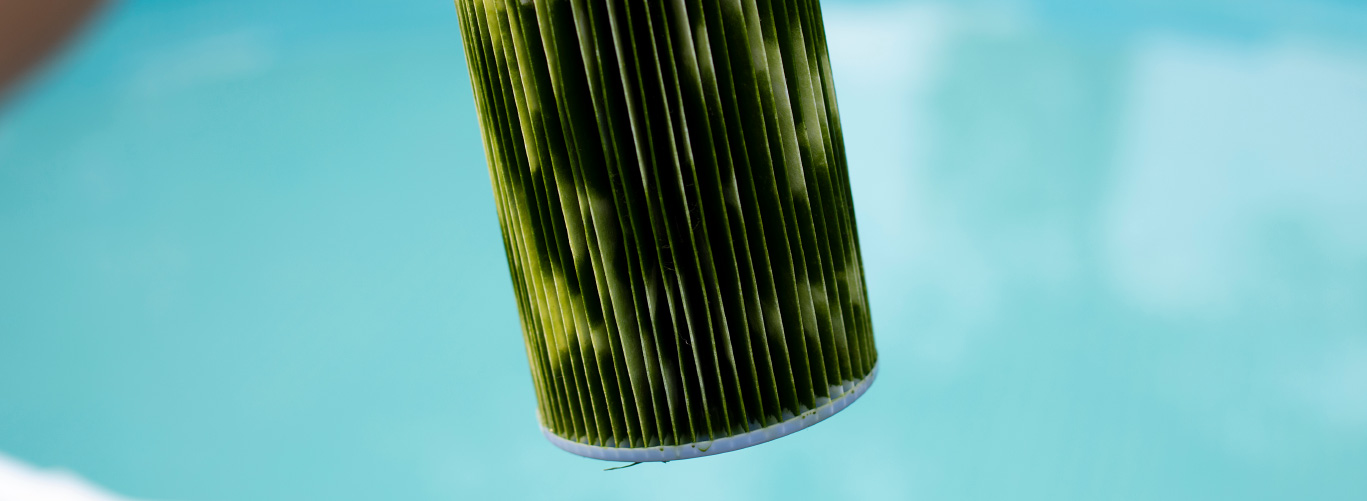
Prevention Measures for Pool Algae
Prevention is always better (and easier) than cure. Here are some tried-and-true methods to keep algae at bay.
Proper Pool Maintenance
Regular cleaning is your first line of defence. Skim the surface, vacuum the bottom, and brush the walls to remove any potential algae spores.
Effective Filtration and Circulation
Ensure your pool’s filtration system is in top shape. Running the pump for at least 8-12 hours a day helps keep the water moving, making it harder for algae to settle.
Regular Water Testing and Chemical Balancing
Test your pool water frequently to maintain balanced chemicals. Chlorine should be kept at optimal levels, and pH should be monitored to ensure it stays within the ideal range of 7.2-7.6.
Spotting and Diagnosing Algae in Pools
Sometimes, despite your best efforts, algae can still make an appearance. Here’s how to spot and diagnose the problem early.
Signs and Symptoms
Green, cloudy water is a telltale sign of green algae. Yellow algae will appear as patches on walls, while black algae present as small, dark spots.
Steps to Confirm Algae Presence
Use a pool brush to scrub suspected spots. If the substance comes off easily and reappears quickly, it’s likely algae. Testing kits can also help confirm the presence of algae by measuring the levels of specific chemicals in the water.
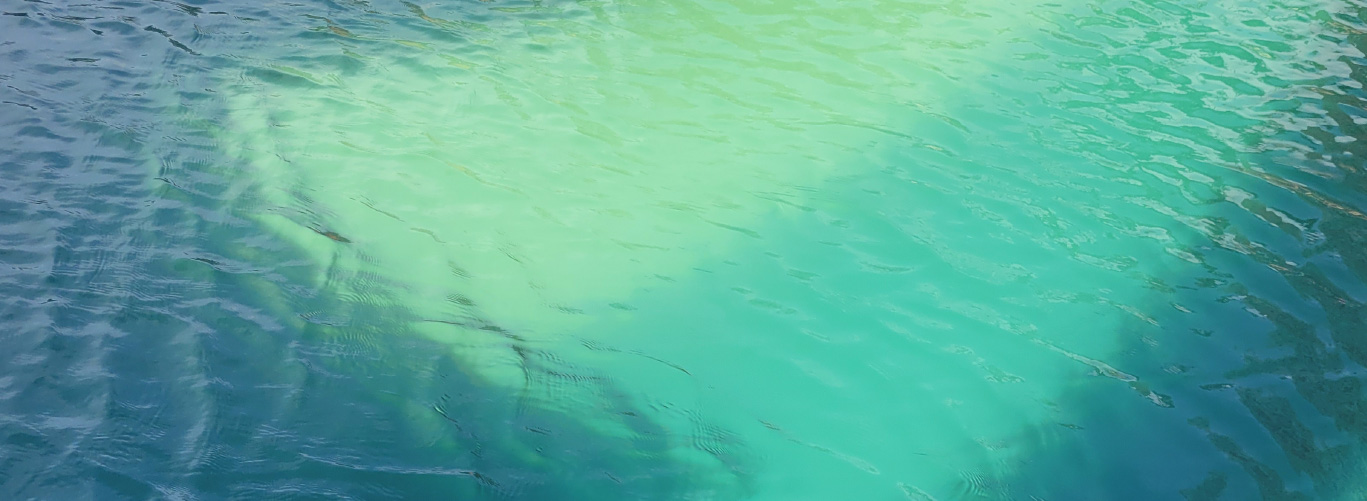
Treating and Removing Pool Algae
Once you’ve identified the problem, it’s time to take action. Here’s how to tackle algae head-on.
Manual and Mechanical Methods
Start with a thorough scrubbing. Use a stiff brush to remove algae from walls and floors. Follow up with vacuuming to remove the debris from the water.
Chemical Treatments
Shock the pool with a high dose of chlorine to kill the algae. This process involves adding 5-10 times the normal amount of chlorine to the water, ensuring thorough disinfection.
Algaecide Use
Algaecides can be a powerful weapon in your arsenal. Select an algaecide compatible with your pool’s needs and follow the manufacturer’s instructions for application.
Post-Treatment Maintenance to Prevent Algae Return
After successfully treating the algae, ongoing maintenance is crucial to prevent recurrence.
Regular Cleaning Routine
Continue with regular pool cleaning and water testing, paying extra attention to areas where algae were previously present.
Maintain Proper Chemical Levels
Keep a close eye on your pool’s chemical balance. Regularly shock the pool and add algaecides as a preventive measure.
Monitor Filtration System
Ensure your filtration system is running efficiently. Clean the filter regularly and replace it as needed to maintain optimal water circulation.
Keep Your Pool Sparkling Clear
Dealing with pool algae might seem daunting, but with the right knowledge and tools, you can keep your pool sparkling clean and inviting. Remember, prevention is key. Regular maintenance, effective filtration, and balanced chemicals are your best allies in this fight. Skimming debris, vacuuming the pool floor, and brushing the walls should be part of your routine. Ensure your filtration system is running efficiently and test your water regularly to maintain proper chemical balance. Should algae strike, act swiftly with a combination of manual, mechanical, and chemical treatments. Start by manually removing as much algae as possible, then use a pool vacuum to clean the remnants. Follow up with a shock treatment and algaecide to kill any remaining spores. By staying vigilant and proactive, you can enjoy a clean, algae-free pool all season long.
Dealing With Pool Algae: Prevention And Remedies
Owning a pool is one of the greatest luxuries, especially when the sun is shining and you've got a refreshing oasis right in your backyard. But nothing spoils this paradise faster than the unwelcome arrival of pool algae. These pesky invaders can turn your crystalline waters into a murky, uninviting mess. In this blog post, we'll delve into the world of pool algae, explore the types commonly found in pools, and discuss effective prevention and treatment strategies. Our aim is to equip you with all the knowledge you need to keep your pool algae-free and always ready for a swim.
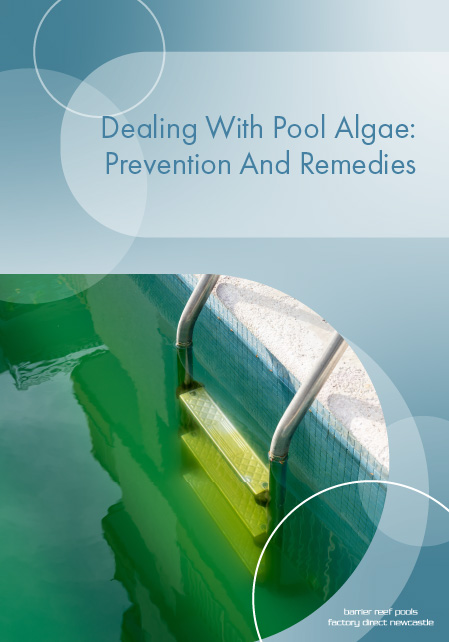
Types of Algae Common in Pools
Understanding the enemy is the first step in any battle, so let’s get familiar with the three most common types of algae that can infest your pool.
Green Algae
Green algae are the most frequent offenders in swimming pools, thriving particularly in warm, sunny conditions. They can spread rapidly, turning your water a sickly green hue within days if not managed properly. Not only do they make your pool look unpleasant and uninviting, but they also create a slippery surface that can be hazardous for swimmers. Regular cleaning and proper water balance are crucial in preventing their growth.
Yellow Algae
Yellow algae, also known as mustard algae, are less common but considerably more stubborn. They typically cling to walls, steps, and other surfaces, often requiring more aggressive treatment to remove. Their yellowish-brown appearance can be mistaken for pollen or sand, but they are much more tenacious and resistant to standard pool chemicals. Persistent and tough to eliminate, they often necessitate specialised algaecides and thorough scrubbing.
Black Algae
Black algae are the toughest to eradicate among all types. They form dark, spotty clusters that penetrate deep into porous surfaces like concrete and plaster. Their robust roots anchor them firmly, making them resistant to standard chemical treatments and regular brushing. Eradicating black algae often requires a combination of aggressive chemical treatments, such as high doses of algaecides, and persistent manual scrubbing to ensure the roots are completely removed. Consistent monitoring and maintenance are essential to prevent their recurrence.
Factors Contributing to Algae Growth
So, what causes these tiny invaders to infiltrate your watery haven? Several factors can contribute to algae growth in your pool.
Inadequate Filtration and Circulation
If your pool’s filtration system isn’t working efficiently, or if water circulation is poor, algae can find the perfect environment to thrive.
Imbalanced Water Chemistry
Keeping your pool’s water chemistry balanced is crucial. Low chlorine levels, high pH, and imbalanced alkalinity can create a breeding ground for algae.
Environmental Factors
Leaves, debris, and organic matter introduce nutrients that algae feed on. Warm temperatures and sunlight also accelerate algae growth, making it essential to cover your pool when not in use.
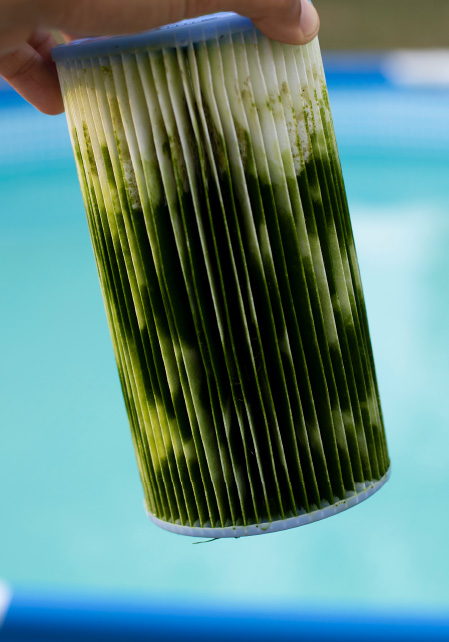
Prevention Measures for Pool Algae
Prevention is always better (and easier) than cure. Here are some tried-and-true methods to keep algae at bay.
Proper Pool Maintenance
Regular cleaning is your first line of defence. Skim the surface, vacuum the bottom, and brush the walls to remove any potential algae spores.
Effective Filtration and Circulation
Ensure your pool’s filtration system is in top shape. Running the pump for at least 8-12 hours a day helps keep the water moving, making it harder for algae to settle.
Regular Water Testing and Chemical Balancing
Test your pool water frequently to maintain balanced chemicals. Chlorine should be kept at optimal levels, and pH should be monitored to ensure it stays within the ideal range of 7.2-7.6.
Spotting and Diagnosing Algae in Pools
Sometimes, despite your best efforts, algae can still make an appearance. Here’s how to spot and diagnose the problem early.
Signs and Symptoms
Green, cloudy water is a telltale sign of green algae. Yellow algae will appear as patches on walls, while black algae present as small, dark spots.
Steps to Confirm Algae Presence
Use a pool brush to scrub suspected spots. If the substance comes off easily and reappears quickly, it’s likely algae. Testing kits can also help confirm the presence of algae by measuring the levels of specific chemicals in the water.
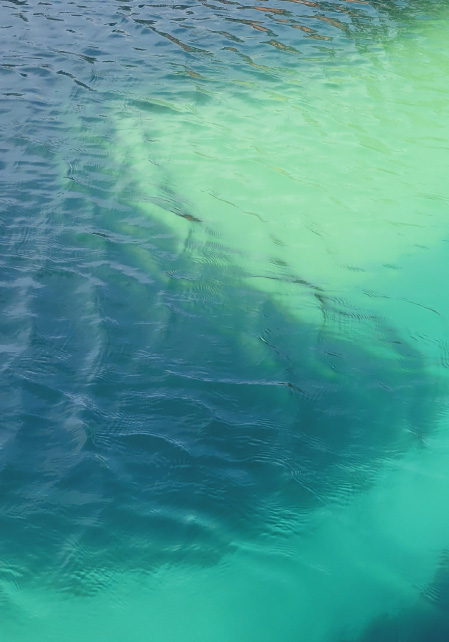
Treating and Removing Pool Algae
Once you’ve identified the problem, it’s time to take action. Here’s how to tackle algae head-on.
Manual and Mechanical Methods
Start with a thorough scrubbing. Use a stiff brush to remove algae from walls and floors. Follow up with vacuuming to remove the debris from the water.
Chemical Treatments
Shock the pool with a high dose of chlorine to kill the algae. This process involves adding 5-10 times the normal amount of chlorine to the water, ensuring thorough disinfection.
Algaecide Use
Algaecides can be a powerful weapon in your arsenal. Select an algaecide compatible with your pool’s needs and follow the manufacturer’s instructions for application.
Post-Treatment Maintenance to Prevent Algae Return
After successfully treating the algae, ongoing maintenance is crucial to prevent recurrence.
Regular Cleaning Routine
Continue with regular pool cleaning and water testing, paying extra attention to areas where algae were previously present.
Maintain Proper Chemical Levels
Keep a close eye on your pool’s chemical balance. Regularly shock the pool and add algaecides as a preventive measure.
Monitor Filtration System
Ensure your filtration system is running efficiently. Clean the filter regularly and replace it as needed to maintain optimal water circulation.
Keep Your Pool Sparkling Clear
Dealing with pool algae might seem daunting, but with the right knowledge and tools, you can keep your pool sparkling clean and inviting. Remember, prevention is key. Regular maintenance, effective filtration, and balanced chemicals are your best allies in this fight. Skimming debris, vacuuming the pool floor, and brushing the walls should be part of your routine. Ensure your filtration system is running efficiently and test your water regularly to maintain proper chemical balance. Should algae strike, act swiftly with a combination of manual, mechanical, and chemical treatments. Start by manually removing as much algae as possible, then use a pool vacuum to clean the remnants. Follow up with a shock treatment and algaecide to kill any remaining spores. By staying vigilant and proactive, you can enjoy a clean, algae-free pool all season long.



